Groat Food, a term often used to describe dishes made with whole grain groats, is gaining popularity, and for good reason. At larosafoods.com, we’re passionate about bringing you delicious and nutritious recipes, and groat food perfectly embodies both. This versatile ingredient can be used in countless ways, from hearty breakfast cereals to savory side dishes, offering a delightful nutty flavor and a satisfying chewy texture. Ready to explore the world of whole grain goodness? Let’s dive in! Learn how groats contribute to a healthy eating plan, a balanced diet, and mindful eating.
1. What Exactly is Groat Food, And Why is It Trending?
Groat food refers to dishes prepared using whole grains called groats. Groats are cereal grains that have been hulled but not further processed, retaining their bran, germ, and endosperm. This minimal processing preserves the grain’s natural nutrients and fiber.
What makes groat food a trending topic?
- Nutritional Powerhouse: Groats are packed with fiber, vitamins, and minerals, making them a healthy addition to any diet.
- Versatile Ingredient: They can be used in a variety of dishes, from breakfast cereals to salads and side dishes.
- Satisfying Texture: Groats offer a unique chewy texture that adds interest to meals.
- Growing Interest in Whole Grains: With increasing awareness of the health benefits of whole grains, groats are becoming a popular choice for health-conscious consumers.
2. What Types of Groats Are Commonly Used in Groat Food?
Several types of groats are popular in cooking, each with its unique flavor and texture.
| Type of Groat | Description | Flavor Profile | Common Uses |
|---|---|---|---|
| Oat Groats | Whole oat kernels with the inedible outer hull removed. | Mild, nutty | Breakfast cereal (groatmeal), soups, salads, side dishes |
| Wheat Groats | Whole wheat kernels with only the outer husk removed. | Nutty, slightly sweet | Pilafs, salads, soups, side dishes |
| Buckwheat | Technically a seed, but used as a grain. | Earthy, slightly bitter | Kasha (Eastern European dish), noodles (soba), pancakes |
| Barley | Whole barley kernels with the outer hull removed. | Nutty, slightly chewy | Soups, stews, salads, side dishes |
| Rye Groats | Whole rye kernels with the outer hull removed. | Robust, slightly tangy | Bread, soups, salads, side dishes |
| Rice Groats | Whole rice kernels with only the husk removed; typically brown rice. | Mild, slightly nutty | Pilafs, salads, side dishes |
| Corn Groats | Dried kernels of corn (maize) from which the hull, germ, and tip cap have been removed. Also known as hominy when treated with alkali. Cornmeal can be ground from corn grits or corn groats, but grits are generally coarser. | Mild, sweet | Grits, polenta, side dishes, soups, stews |
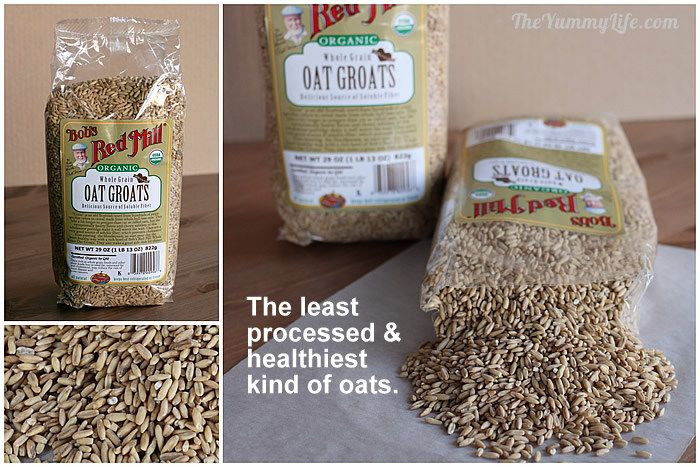

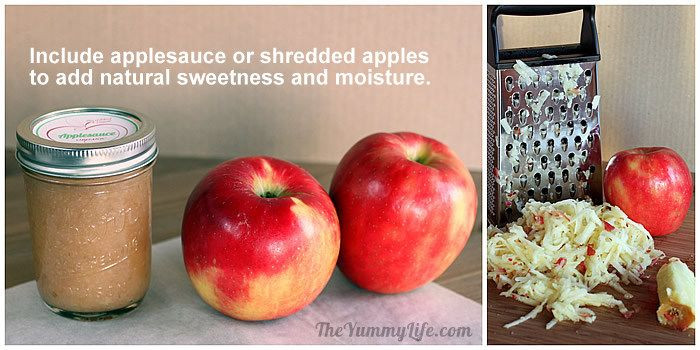
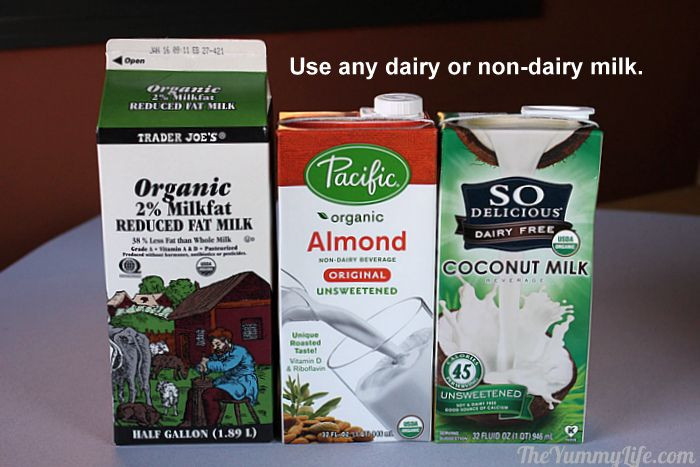
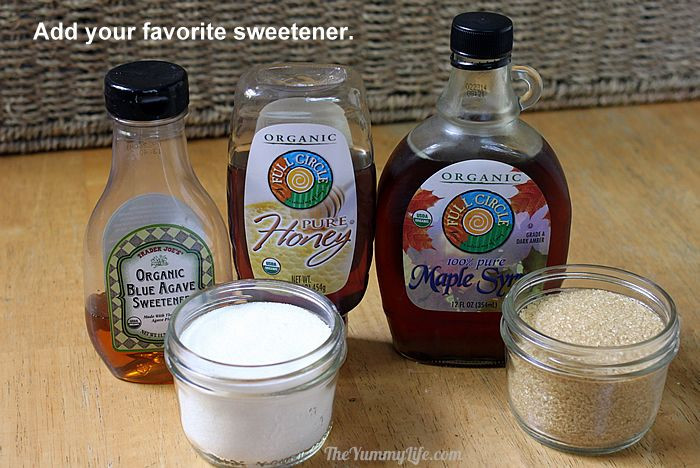
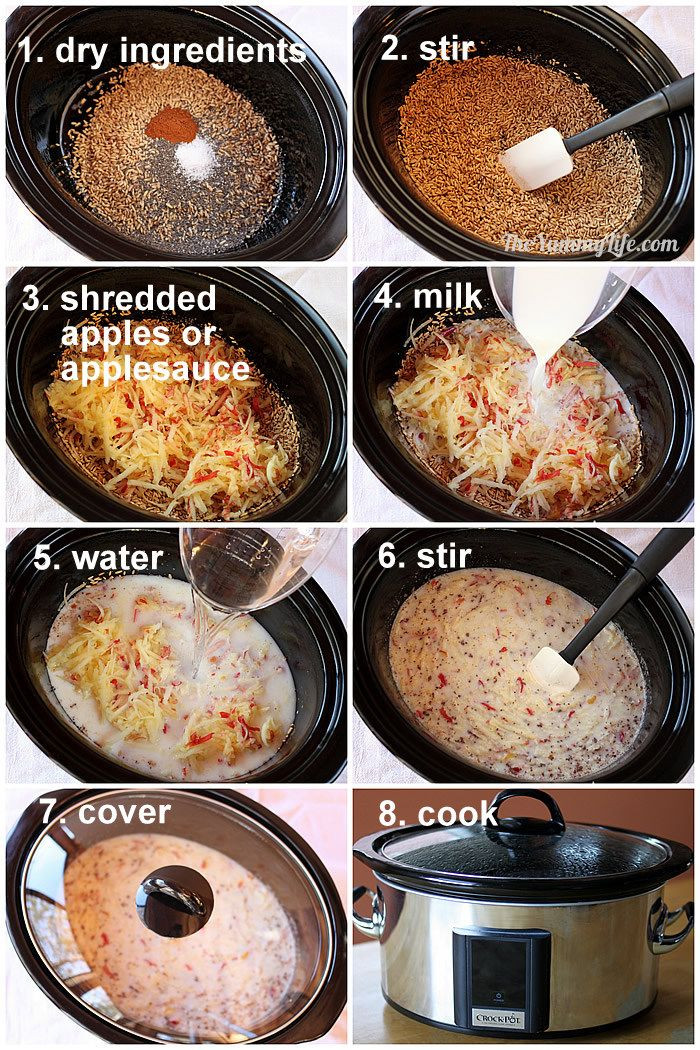
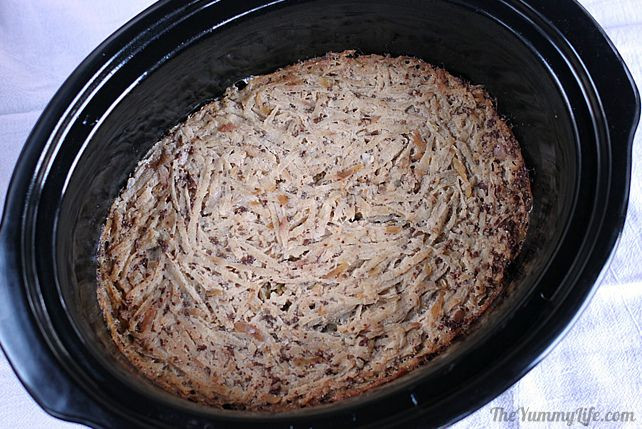
3. What Are The Nutritional Benefits of Incorporating Groat Food Into Your Diet?
Groat foods are nutritional powerhouses, offering a range of health benefits.
Key Nutrients and Benefits:
- High in Fiber: Groats are an excellent source of dietary fiber, which aids digestion, promotes bowel regularity, and helps you feel full longer.
- Rich in Vitamins and Minerals: They contain essential nutrients such as manganese, magnesium, iron, and B vitamins, which are vital for overall health.
- May Help Lower Cholesterol: The soluble fiber in groats, particularly oat groats, has been shown to help lower LDL (“bad”) cholesterol levels, reducing the risk of heart disease, according to the Mayo Clinic.
- Stabilizes Blood Sugar: Groats have a low glycemic index, meaning they are digested slowly and help stabilize blood sugar levels, making them a good choice for people with diabetes.
- Aids in Weight Management: The high fiber content of groats can help with weight management by promoting satiety and reducing calorie intake.
- Gluten-Free Options: Certain groats, like buckwheat and rice groats, are naturally gluten-free, making them suitable for individuals with gluten sensitivities or celiac disease.
These are oat groats.
4. How Does Groat Food Compare to Other Grain-Based Dishes in Terms of Health?
Compared to more processed grain products, groat foods offer significant health advantages.
Groats vs. Processed Grains:
- Higher Fiber Content: Groats retain their bran layer, which is rich in fiber. Processed grains often have the bran removed, reducing their fiber content.
- More Nutrients: The refining process can strip grains of essential vitamins and minerals. Groats, being minimally processed, retain more of their natural nutrients.
- Lower Glycemic Index: Groats tend to have a lower glycemic index than processed grains, leading to a more gradual release of glucose into the bloodstream.
- Fewer Additives: Processed grain products often contain added sugars, unhealthy fats, and artificial ingredients, which are absent in whole groats.
Groats vs. Other Whole Grains:
While all whole grains offer health benefits, groats stand out due to their minimal processing. For example, steel-cut oats, while nutritious, are cut into smaller pieces, which can affect digestion and blood sugar response compared to whole oat groats.
5. What Are Some Delicious and Easy Ways to Prepare Groat Food at Home?
Groats are incredibly versatile and can be incorporated into various dishes. Here are some easy and delicious ways to prepare groat food at home:
Breakfast:
- Groatmeal: Cook oat groats in water or milk (dairy or non-dairy) with a pinch of salt and cinnamon. Top with your favorite fruits, nuts, seeds, and a drizzle of maple syrup or honey.
- Overnight Groats: Combine groats with milk, yogurt, and your favorite toppings in a jar and refrigerate overnight for a quick and easy breakfast.
Lunch and Dinner:
- Groat Salad: Cook groats and toss them with roasted vegetables, herbs, and a vinaigrette dressing for a hearty and nutritious salad.
- Groat Pilaf: Sauté groats with vegetables and broth for a flavorful side dish.
- Groat Soup: Add groats to your favorite soup or stew for added texture and nutrition.
- Groat Bowls: Create a balanced bowl with cooked groats, protein (such as grilled chicken, tofu, or beans), and a variety of vegetables and sauces.
Snacks:
- Groat Energy Bites: Combine cooked groats with nut butter, dried fruit, and seeds, then roll into bite-sized balls for a healthy snack.
6. Can Groat Food Be Part of a Weight Management Plan? How?
Yes, groat food can be a valuable component of a weight management plan.
How Groats Aid Weight Management:
- High Fiber Content: The high fiber content of groats promotes satiety, helping you feel full longer and reducing overall calorie intake.
- Stabilizes Blood Sugar: By stabilizing blood sugar levels, groats can help prevent cravings and energy crashes that often lead to overeating.
- Nutrient-Dense: Groats provide essential vitamins and minerals, ensuring you get the nutrients you need while consuming fewer calories.
- Versatile and Satisfying: Groats can be incorporated into a variety of dishes, making it easier to stick to a healthy eating plan.
Tips for Using Groats in Weight Management:
- Control Portion Sizes: While groats are healthy, it’s important to control portion sizes to manage calorie intake.
- Combine with Lean Protein and Vegetables: Pair groats with lean protein sources and plenty of vegetables for a balanced and satisfying meal.
- Choose Healthy Toppings and Add-Ins: Opt for healthy toppings and add-ins like fruits, nuts, and seeds, and avoid excessive amounts of added sugars and unhealthy fats.
- Use as a Substitute for Processed Grains: Replace processed grains like white rice and pasta with groats to increase your fiber intake and improve your overall nutrition.
7. What Are Some Common Mistakes to Avoid When Cooking with Groats?
To ensure your groat dishes turn out perfectly, avoid these common mistakes:
- Not Rinsing Groats: Rinse groats before cooking to remove any debris and improve their texture.
- Using Insufficient Liquid: Use the correct ratio of liquid to groats to prevent them from drying out or becoming mushy.
- Not Adjusting Cooking Time: Cooking times can vary depending on the type of groat and the cooking method. Check for doneness periodically and adjust the cooking time as needed.
- Overcooking Groats: Overcooked groats can become mushy and lose their appealing texture. Cook them until they are tender but still slightly chewy.
- Not Seasoning Properly: Season groats generously with salt, herbs, and spices to enhance their flavor.
Cinnamon is one of the ingredients.
8. How Can I Incorporate Groat Food Into Different Dietary Lifestyles (e.g., Vegan, Gluten-Free)?
Groat food can be easily adapted to various dietary lifestyles:
- Vegan: Use plant-based milk (such as almond, soy, or coconut milk) and vegan-friendly toppings and add-ins in groat dishes.
- Gluten-Free: Choose naturally gluten-free groats like buckwheat, rice groats, or certified gluten-free oat groats. Be sure to check labels to ensure products are not contaminated with gluten.
- Low-Carb: While groats are relatively high in carbohydrates, they can be included in moderation in a low-carb diet. Focus on portion control and pair them with plenty of healthy fats and protein.
- Paleo: Grains are generally restricted on the paleo diet, so groats are typically not included. However, some people following a modified paleo diet may choose to include certain gluten-free groats like buckwheat in moderation.
9. Where Can I Find High-Quality Groats and Groat-Based Products?
You can find high-quality groats and groat-based products at:
- Grocery Stores: Look for groats in the natural foods section or the bulk bins of your local grocery store.
- Health Food Stores: Health food stores typically offer a wide variety of groats, including organic and gluten-free options.
- Online Retailers: Online retailers like Amazon offer a convenient way to purchase groats and other groat-based products.
- Farmers’ Markets: Local farmers’ markets may offer fresh, locally grown groats.
Tips for Choosing High-Quality Groats:
- Check the Expiration Date: Ensure the groats are fresh and have not expired.
- Look for Whole, Intact Kernels: Avoid groats that are broken or damaged.
- Choose Organic When Possible: Opt for organic groats to minimize your exposure to pesticides and other chemicals.
- Read Labels Carefully: Check labels for added ingredients, such as sugars, sodium, and preservatives.
10. What Are the Emerging Trends and Innovations in the World of Groat Food?
The world of groat food is constantly evolving, with new trends and innovations emerging.
Emerging Trends:
- Groat Bowls: Customizable bowls featuring cooked groats as a base, topped with protein, vegetables, sauces, and other toppings.
- Savory Groat Dishes: An increasing interest in using groats in savory dishes like salads, pilafs, and soups.
- Groat-Based Snacks: New snack products featuring groats, such as energy bites, granola bars, and crackers.
- Fermented Groat Products: Exploring the use of fermentation to enhance the flavor and nutritional value of groats.
- Sustainable Sourcing: A growing emphasis on sourcing groats from sustainable and environmentally friendly farms.
Applesauce or shredded apples are common ingredients.
11. Can Groat Food Help Improve Digestive Health?
Yes, groat food can significantly contribute to improved digestive health due to its high fiber content. Fiber adds bulk to the stool, making it easier to pass through the digestive system and preventing constipation.
How Groats Support Digestive Health:
- Promotes Regularity: The fiber in groats helps maintain regular bowel movements, preventing constipation and promoting overall digestive health.
- Nourishes Gut Bacteria: Fiber acts as a prebiotic, feeding beneficial bacteria in the gut and promoting a healthy gut microbiome.
- Reduces Risk of Diverticulitis: A high-fiber diet, including groats, may reduce the risk of developing diverticulitis, a condition characterized by inflammation or infection in the digestive tract.
- Supports Weight Management: By promoting satiety and regulating blood sugar levels, groats can help with weight management, which is also beneficial for digestive health.
12. What Role Does Groat Food Play in Preventing Chronic Diseases?
Groat food plays a significant role in preventing chronic diseases due to its rich nutrient profile.
How Groats Help Prevent Chronic Diseases:
- Heart Disease: The soluble fiber in oats can help lower LDL (“bad”) cholesterol levels, reducing the risk of heart disease.
- Type 2 Diabetes: Groats have a low glycemic index, meaning they are digested slowly and help stabilize blood sugar levels, making them a good choice for people with diabetes.
- Obesity: The high fiber content of groats can help with weight management by promoting satiety and reducing calorie intake, thus reducing the risk of obesity.
- Certain Cancers: Some studies suggest that a diet rich in whole grains like groats may reduce the risk of certain cancers, such as colorectal cancer.
According to research from the University of California, Berkeley, in July 2025, diets rich in whole grains such as groats can provide significant benefits in preventing chronic diseases.
13. How Can I Store Groats to Maintain Freshness and Quality?
Proper storage is essential to maintain the freshness and quality of groats.
Storage Tips:
- Store in an Airtight Container: Transfer groats to an airtight container to protect them from moisture, pests, and odors.
- Keep in a Cool, Dry Place: Store groats in a cool, dry place, such as a pantry or cupboard, away from direct sunlight and heat.
- Avoid Storing Near Strong Odors: Groats can absorb odors from their surroundings, so avoid storing them near strong-smelling foods.
- Use Within Recommended Timeframe: Check the expiration date on the package and use groats within the recommended timeframe for optimal freshness and quality.
- Consider Refrigeration or Freezing: For longer storage, you can refrigerate or freeze groats in an airtight container.
14. What Are Some Creative Ways to Enhance the Flavor of Groat Food?
There are countless ways to enhance the flavor of groat food.
Flavor Enhancement Ideas:
- Toast Groats Before Cooking: Toasting groats in a dry skillet before cooking can bring out their nutty flavor.
- Use Broth Instead of Water: Cook groats in broth instead of water for added flavor.
- Add Herbs and Spices: Experiment with different herbs and spices to complement the flavor of groats.
- Roast Vegetables with Groats: Roast vegetables with groats for a flavorful and nutritious side dish.
- Top with Flavorful Sauces: Drizzle groat dishes with flavorful sauces like pesto, tahini dressing, or balsamic glaze.
- Incorporate Dried Fruits and Nuts: Add dried fruits and nuts to groat dishes for added sweetness and texture.
- Use Citrus Zest: Add citrus zest to groat dishes for a bright and refreshing flavor.
Dairy or non-dairy milk can be added.
15. Are There Any Potential Downsides to Eating Groat Food?
While groat food is generally healthy, there are a few potential downsides to consider:
- High in Carbohydrates: Groats are relatively high in carbohydrates, so people following a low-carb diet should consume them in moderation.
- Phytic Acid Content: Groats contain phytic acid, which can inhibit the absorption of certain minerals. Soaking or sprouting groats before cooking can help reduce phytic acid levels.
- Potential Allergies: While rare, some people may be allergic to certain groats. If you experience any allergic symptoms after eating groat food, discontinue use and consult a healthcare professional.
- Digestive Issues: Some people may experience digestive issues like bloating or gas after eating groat food, especially if they are not used to consuming high-fiber foods. Gradually increasing your intake of groats can help minimize these effects.
16. How Can I Get Children to Enjoy Groat Food?
Getting children to enjoy groat food can be a challenge, but here are some tips to make it more appealing:
- Start with Mild-Flavored Groats: Begin with mild-flavored groats like oat groats or rice groats, which are more likely to be accepted by children.
- Add Sweeteners and Toppings: Add natural sweeteners like maple syrup or honey and toppings like fruits, nuts, and seeds to make groat dishes more appealing.
- Get Creative with Presentation: Use fun shapes and colors to make groat dishes more visually appealing.
- Involve Children in the Cooking Process: Let children help with age-appropriate tasks like stirring and adding toppings to get them more interested in trying groat food.
- Offer Groat Food as Part of a Balanced Meal: Serve groat food as part of a balanced meal that includes other foods that children enjoy.
- Be Patient and Persistent: It may take multiple attempts for children to accept new foods, so be patient and persistent.
17. What is the Environmental Impact of Groat Food Production?
The environmental impact of groat food production can vary depending on factors such as farming practices, transportation, and processing methods.
Environmental Considerations:
- Sustainable Farming Practices: Look for groats that are grown using sustainable farming practices, such as crop rotation, reduced tillage, and integrated pest management, to minimize environmental impact.
- Local Sourcing: Choose locally sourced groats to reduce transportation emissions and support local farmers.
- Organic Farming: Opt for organic groats to minimize your exposure to synthetic pesticides and fertilizers, which can harm the environment.
- Water Usage: Be mindful of the water usage associated with groat production, especially in water-scarce regions.
- Packaging: Choose groat products with minimal and eco-friendly packaging to reduce waste.
18. How Does the Cost of Groat Food Compare to Other Staple Foods?
The cost of groat food can vary depending on the type of groat, brand, and retailer.
Cost Comparison:
- Groats vs. Processed Grains: Groats are generally more affordable than processed grains like white rice and pasta.
- Groats vs. Other Whole Grains: The cost of groats is comparable to other whole grains like quinoa and brown rice.
- Organic vs. Conventional Groats: Organic groats tend to be more expensive than conventional groats.
- Bulk vs. Packaged Groats: Buying groats in bulk can often be more cost-effective than buying packaged groats.
19. What Are Some Global Variations of Groat-Based Dishes?
Groat-based dishes are enjoyed in various forms around the world.
Global Variations:
- Kasha (Eastern Europe): A traditional dish made from roasted buckwheat groats.
- Polenta (Italy): A dish made from coarsely ground corn groats, often served as a side dish or main course.
- Grits (Southern USA): A dish made from coarsely ground corn groats, often served as a breakfast staple.
- Risotto (Italy): A creamy rice dish made with Arborio rice, a type of rice groat.
- Oatmeal (Worldwide): A breakfast dish made from oat groats, often flavored with milk, sweeteners, and toppings.
Maple syrup is a good sweetener.
20. What Are Some Must-Try Groat Food Recipes for Beginners?
If you’re new to cooking with groats, here are some must-try recipes to get you started:
- Slow Cooker Oat Groatmeal: A simple and delicious breakfast dish that can be made overnight in a slow cooker.
- Buckwheat Salad with Roasted Vegetables: A hearty and nutritious salad featuring roasted vegetables and toasted buckwheat groats.
- Barley Soup with Mushrooms: A flavorful and comforting soup made with barley groats and mushrooms.
- Corn Grits with Shrimp: A classic Southern dish featuring creamy corn grits and succulent shrimp.
- Wheat Berry Pilaf with Herbs: A flavorful and versatile side dish made with wheat berries and fresh herbs.
21. How Can I Make Groat Food More Appealing to Picky Eaters?
Making groat food appealing to picky eaters requires creativity and patience.
Tips for Picky Eaters:
- Blend Groats into Smoothies: Add cooked groats to smoothies for a hidden nutritional boost.
- Incorporate Groats into Baked Goods: Add cooked groats to muffins, breads, and other baked goods for added texture and nutrition.
- Make Groat “Fries”: Cut cooked groats into fry-like shapes, bake until crispy, and serve with dipping sauces.
- Create Fun Shapes with Groat Dough: Use groat dough to make cookies, crackers, and other fun shapes.
- Offer a Variety of Toppings and Sauces: Let picky eaters choose their own toppings and sauces to customize their groat dishes.
- Be Patient and Persistent: It may take multiple attempts for picky eaters to accept new foods, so be patient and persistent.
22. What Are the Best Ways to Reheat Groat Food?
Reheating groat food properly can help maintain its flavor and texture.
Reheating Methods:
- Microwave: Reheat groat food in the microwave on medium power, stirring occasionally, until heated through.
- Stovetop: Reheat groat food on the stovetop over medium heat, adding a splash of water or broth to prevent it from drying out.
- Oven: Reheat groat food in the oven at 350°F (175°C) until heated through, covering it with foil to prevent it from drying out.
- Slow Cooker: Reheat groat food in the slow cooker on low heat until heated through.
23. How Can I Use Leftover Groats to Create New Dishes?
Leftover groats can be repurposed into a variety of new and exciting dishes.
Creative Uses for Leftover Groats:
- Add to Soups and Stews: Add leftover groats to soups and stews for added texture and nutrition.
- Use in Salads: Toss leftover groats with roasted vegetables, herbs, and a vinaigrette dressing for a hearty salad.
- Make Groat Burgers: Combine leftover groats with beans, vegetables, and spices to make vegetarian burgers.
- Create Groat Fritters: Mix leftover groats with eggs, flour, and seasonings, then fry until golden brown for delicious fritters.
- Add to Stuffing: Use leftover groats as a base for stuffing for poultry or vegetables.
24. What Are Some Common Myths About Groat Food?
There are several myths surrounding groat food that need to be debunked.
Common Myths:
- Myth: Groat food is difficult to cook.
- Fact: Groat food is easy to cook, especially with the help of slow cookers and other convenient appliances.
- Myth: Groat food is bland and tasteless.
- Fact: Groat food can be incredibly flavorful when seasoned properly and combined with other ingredients.
- Myth: Groat food is only for breakfast.
- Fact: Groat food can be enjoyed at any time of day, from breakfast to dinner.
- Myth: Groat food is expensive.
- Fact: Groat food is generally affordable, especially when bought in bulk.
- Myth: Groat food is only for vegetarians.
- Fact: Groat food can be enjoyed by everyone, regardless of their dietary preferences.
A programmable slow cooker is very handy.
25. How Can I Sprout Groats to Enhance Their Nutritional Value?
Sprouting groats can increase their nutritional value and make them easier to digest.
Sprouting Instructions:
- Rinse Groats: Rinse groats thoroughly under cold water.
- Soak Groats: Place groats in a jar or container and cover with water. Soak for 8-12 hours.
- Drain and Rinse: Drain the groats and rinse them thoroughly.
- Sprout Groats: Place the groats in a sprouting jar or container and keep them in a cool, dark place. Rinse them 2-3 times per day.
- Harvest Sprouts: Sprouts are ready to harvest when they have small tails, usually after 2-3 days.
- Store Sprouts: Store sprouts in the refrigerator for up to a week.
26. What Types of Groat Food Are Suitable for Babies and Toddlers?
Groat food can be a nutritious option for babies and toddlers, but it’s essential to choose the right types and prepare them properly.
Suitable Groats for Babies and Toddlers:
- Oat Groats: Oat groats are a good source of fiber and iron, which are essential for babies and toddlers.
- Rice Groats: Rice groats are easy to digest and are a good source of carbohydrates.
- Barley Groats: Barley groats are a good source of fiber and minerals, but they may be harder to digest for some babies and toddlers.
Preparation Tips:
- Cook Groats Until Soft: Cook groats until they are very soft and easy to mash.
- Puree Groats: Puree cooked groats for babies who are just starting to eat solid foods.
- Add Breast Milk or Formula: Add breast milk or formula to pureed groats to make them smoother and more nutritious.
- Avoid Adding Salt or Sugar: Avoid adding salt or sugar to groat dishes for babies and toddlers.
- Introduce Groats Gradually: Introduce groats gradually to babies and toddlers to monitor for any allergic reactions or digestive issues.
27. How Can I Make Groat Food More Sustainable and Eco-Friendly?
Making groat food more sustainable and eco-friendly involves several practices.
Sustainability Tips:
- Choose Organic Groats: Opt for organic groats to minimize your exposure to synthetic pesticides and fertilizers, which can harm the environment.
- Buy Local Groats: Support local farmers by buying groats that are grown in your area, reducing transportation emissions.
- Buy in Bulk: Reduce packaging waste by buying groats in bulk.
- Grow Your Own Groats: Consider growing your own groats in your garden, if possible.
- Compost Food Scraps: Compost food scraps from groat dishes to reduce waste and enrich your soil.
- Use Reusable Containers: Store groats and leftover groat dishes in reusable containers to reduce waste.
28. What Are the Latest Research Findings on the Health Benefits of Groat Food?
Ongoing research continues to uncover new health benefits of groat food.
Recent Research Findings:
- Improved Gut Health: Studies have shown that groat food can improve gut health by promoting the growth of beneficial bacteria.
- Reduced Risk of Chronic Diseases: Research suggests that groat food may reduce the risk of chronic diseases such as heart disease, type 2 diabetes, and certain cancers.
- Enhanced Weight Management: Groat food has been shown to aid in weight management by promoting satiety and regulating blood sugar levels.
- Improved Mental Health: Some studies suggest that groat food may improve mental health by reducing stress and anxiety.
29. How Can I Incorporate Groat Food into My Meal Planning?
Incorporating groat food into your meal planning is easy and can add variety and nutrition to your diet.
Meal Planning Tips:
- Plan Your Meals Around Groats: Start by choosing a groat dish as the centerpiece of your meal, then add other ingredients to complement it.
- Use a Variety of Groats: Experiment with different types of groats to add variety to your diet.
- Prepare Groats in Advance: Cook a batch of groats in advance and use them in different dishes throughout the week.
- Use Leftover Groats Creatively: Repurpose leftover groats into new and exciting dishes.
- Include Groats in Your Breakfast, Lunch, and Dinner: Incorporate groats into your breakfast, lunch, and dinner meals for a balanced diet.
- Use Groats as a Substitute for Processed Grains: Replace processed grains like white rice and pasta with groats to increase your fiber intake and improve your overall nutrition.
30. Where Can I Find More Information and Resources About Groat Food?
There are many resources available to help you learn more about groat food.
Resources:
- Websites: Websites like larosafoods.com offer a wealth of information and recipes about groat food.
- Cookbooks: Cookbooks dedicated to whole grains often include recipes featuring groats.
- Blogs: Food blogs are a great source of information and inspiration for cooking with groats.
- Nutritionists and Dietitians: Consult with a nutritionist or dietitian for personalized advice on incorporating groat food into your diet.
- Universities and Research Institutions: Universities and research institutions conduct studies on the health benefits of groat food and provide valuable information.
After 7 hours of cooking time.
FAQ about Groat Food
- What exactly are groats?
Groats are whole grains that have been hulled but not processed further, retaining their bran, germ, and endosperm for maximum nutrition. - Are groats gluten-free?
Some groats, like buckwheat and rice groats, are naturally gluten-free, while others like wheat and barley groats contain gluten. - How do I cook groats?
Groats can be cooked on the stovetop, in a slow cooker, or in a rice cooker, using a ratio of about 3 parts liquid to 1 part groats. - What are the health benefits of eating groat food?
Groat food is rich in fiber, vitamins, and minerals, and may help lower cholesterol, stabilize blood sugar, and aid in weight management. - Can I use groats in soups and stews?
Absolutely! Groats add a hearty texture and nutty flavor to soups and stews. - What are some popular groat-based dishes?
Popular groat-based dishes include oat groatmeal, buckwheat kasha, barley soup, and corn grits. - How should I store groats?
Store groats in an airtight container in a cool, dry place for up to several months. - Can I sprout groats for added nutrition?
Yes, sprouting groats can increase their nutritional value and make them easier to digest. - Are groats suitable for babies and toddlers?
Cooked and pureed groats can be a nutritious option for babies and toddlers, providing essential nutrients. - Where can I buy groats?
Groats can be found in grocery stores, health food stores, and online retailers.
Ready to explore the delicious and nutritious world of groat food? Visit larosafoods.com for a wide variety of recipes, cooking tips, and nutritional information. Discover how easy it is to incorporate these versatile whole grains into your diet and enjoy the many health benefits they offer. Don’t wait, start your groat food journey today and experience the nutty flavor and satisfying texture that everyone’s talking about. Find your next favorite breakfast, side dish, or healthful meal at larosafoods.com!
Address: 1 S Park St, San Francisco, CA 94107, United States. Phone: +1 (415) 987-0123.

